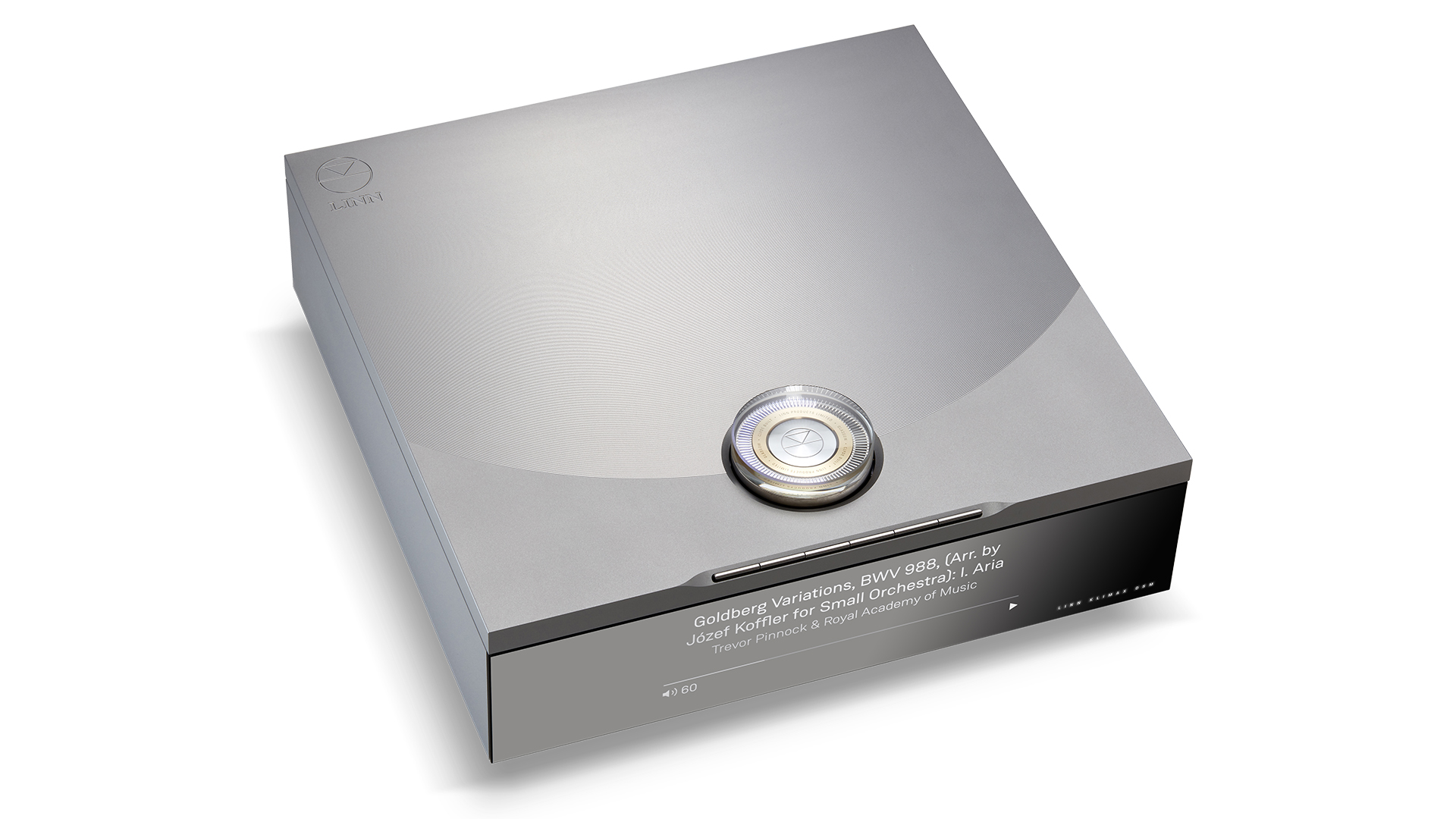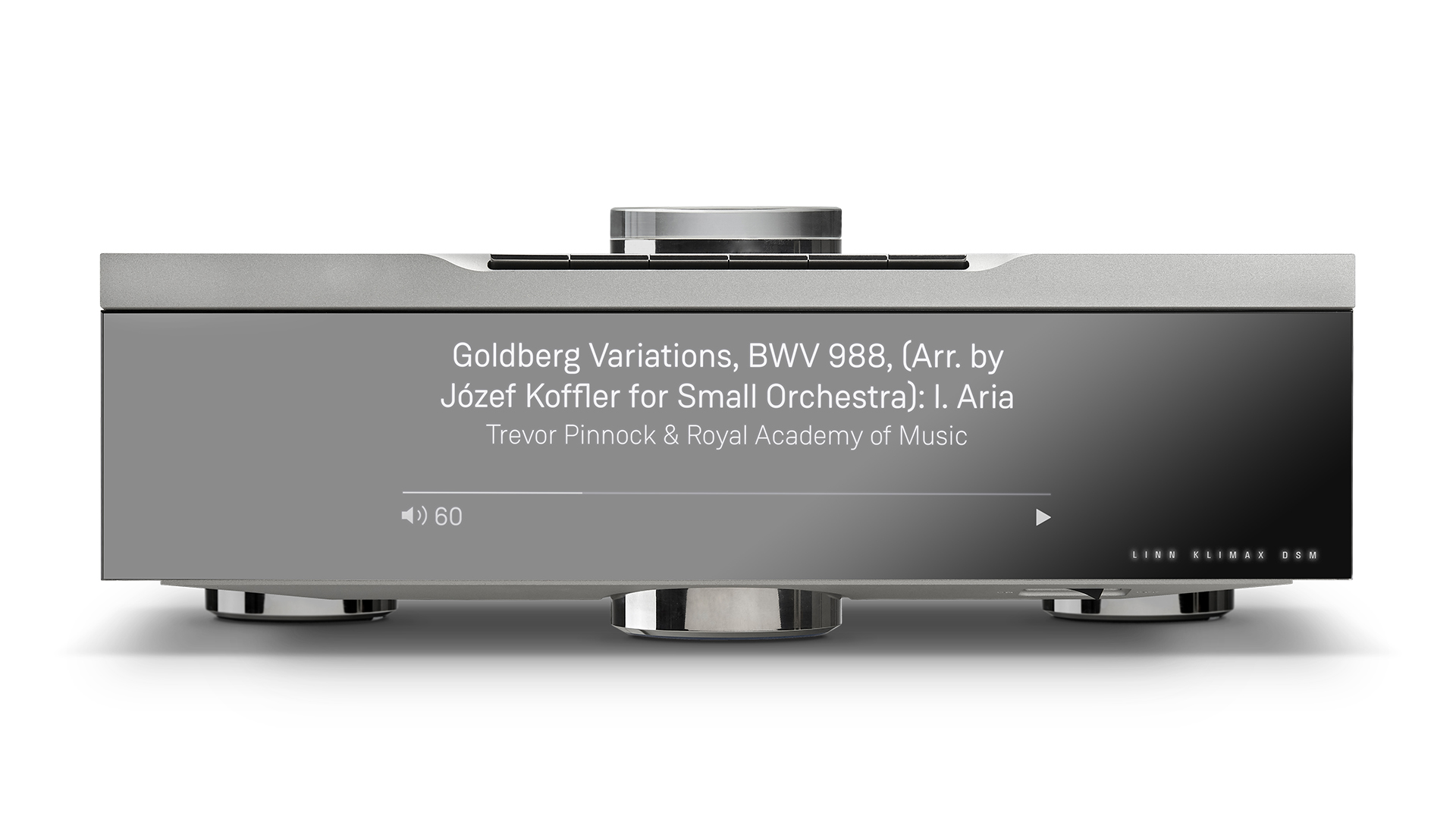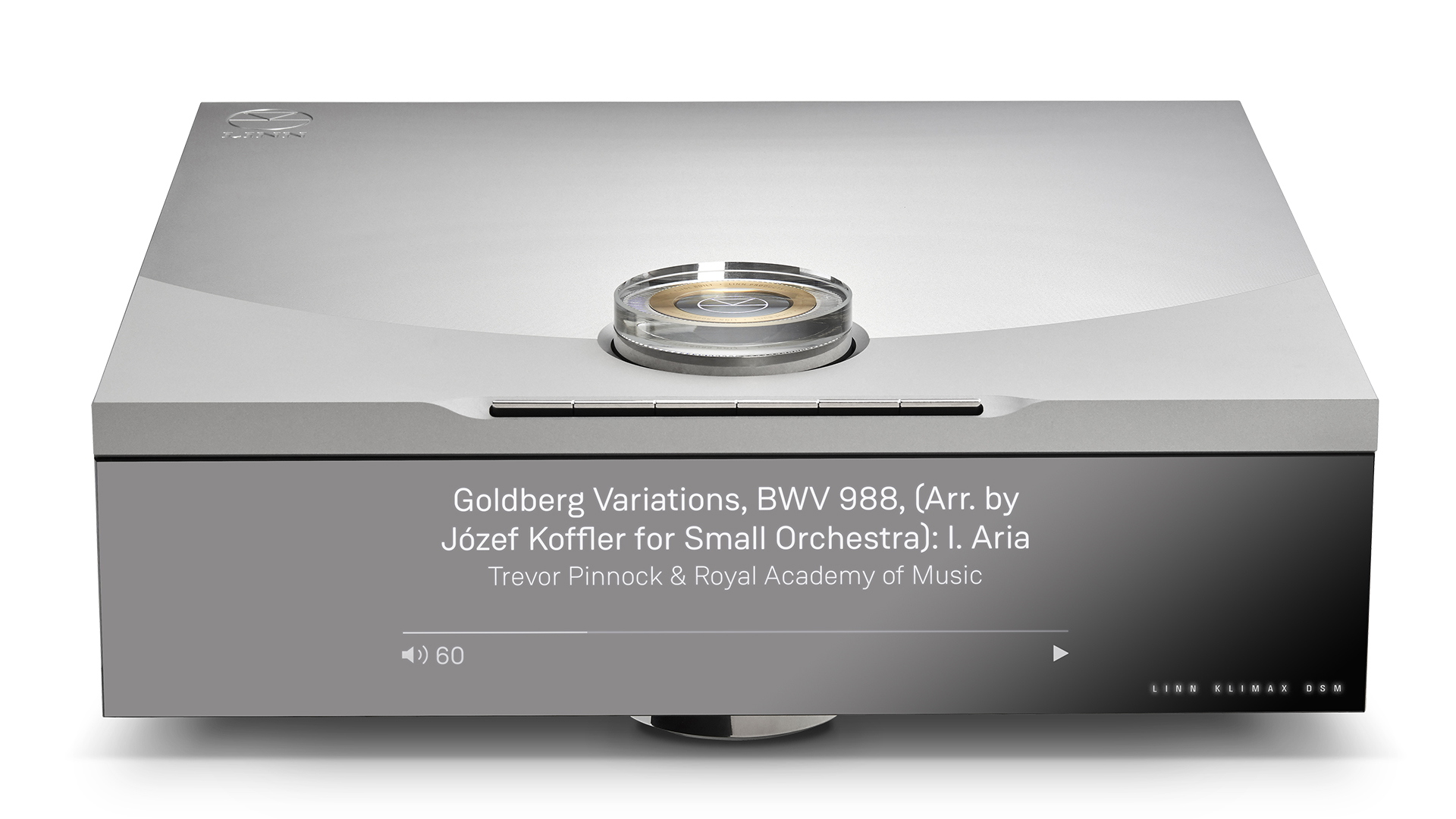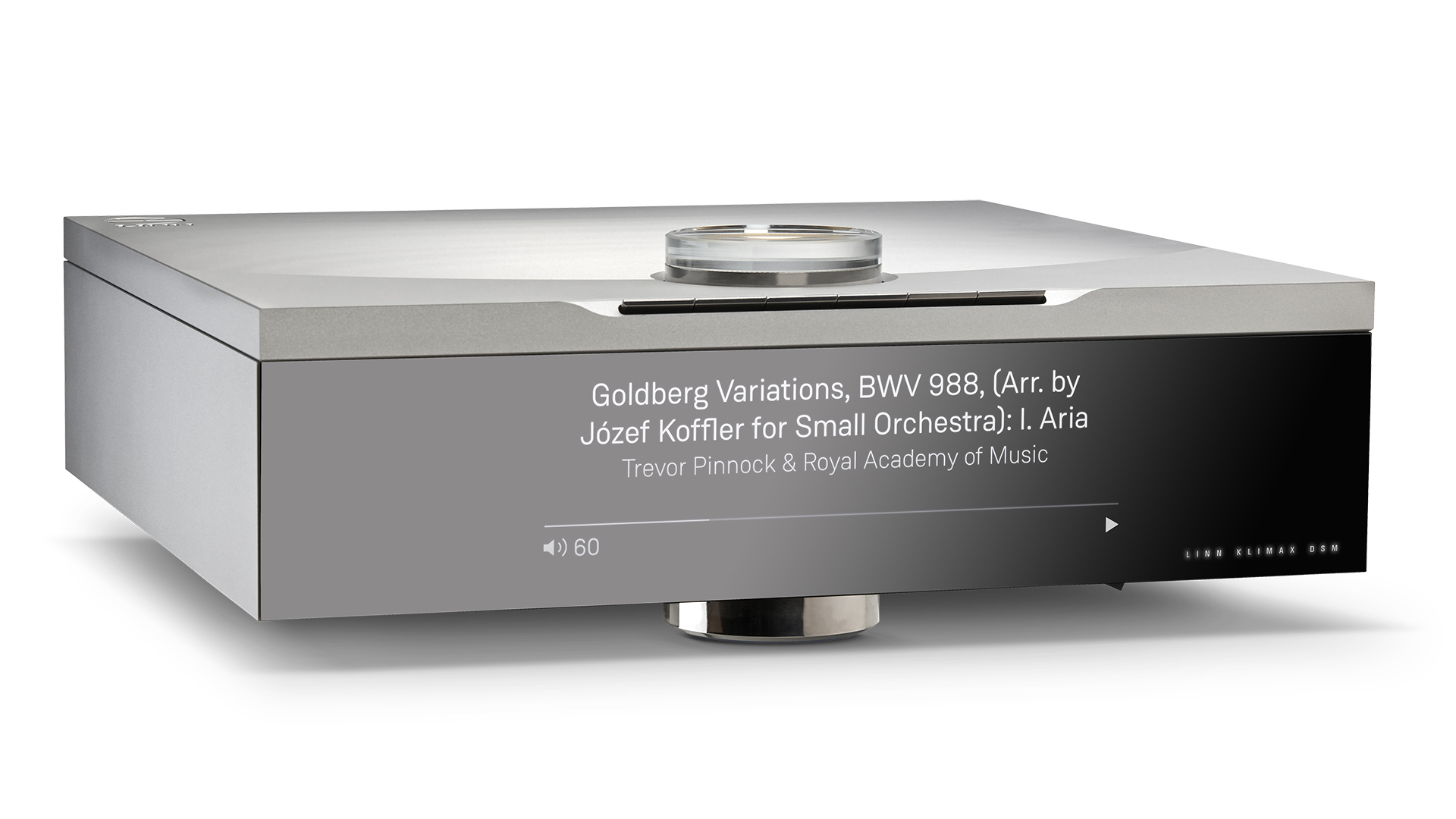What Hi-Fi? Verdict
When it comes to insight, clarity and dynamic expression, Linn's exceptional range-topping Klimax DSM is second to none
Pros
- +
Exceptional transparency and detail
- +
Impressive dynamics
- +
Excellent organisation and control
Cons
- -
Price puts it out of the reach of most
- -
Analogue inputs could sound better
Why you can trust What Hi-Fi?
Linn has been in the streamer game longer than most, and it shows in the sophistication and quality of the new Klimax DSM. In our experience, few rival companies can match the slickness of its streamers or their sonic performance.
So, when the Scottish brand decides to go all out for its new range-topper, the chances are that it will be special. Add that huge price tag into the equation and the expectation only gets bigger.
Features

There are three variants of the Klimax DSM. One is intended to be used as a digital source in a two-channel music set-up. It can access music across your home network from a NAS unit or stream using Tidal, Qobuz or Spotify Connect. There’s also Bluetooth (version 4.2) and AirPlay connectivity to add greater flexibility. It can also work as a Roon endpoint.
The AV variant, the one we have on test here, sells at exactly the same price as the music-only version but adds four HDMI 2.0 sockets and a single e-ARC-equipped output to that already extensive features list. Specify the optional surround sound module for an extra £1200 ($1,560/AU$2395) and it can decode all the current movie sound formats bar Dolby Atmos and DTS:X, though we wouldn’t be surprised if both of these got added over time.
Unfortunately, if you do want to go down the surround sound route it’s not as straightforward as specifying that dedicated module and connecting via analogue interconnects to any standard multichannel power amplifier.
To get the sound out of the Klimax AV you’ll have to invest heavily into Linn's ecosystem, using either a complete 7.1 active set-up equipped with the company’s proprietary Exakt digital link or, rather less neatly, employ a combination of the DSM’s stereo analogue outputs and Exakt connections for a hybrid passive/active set up. Either way, we’re talking a fair bit of complexity and huge money.
The System Hub is the final Klimax DSM variant, and that’s designed specifically to work in an all-Linn set-up, connecting to the rest of the system through the Exakt connection. The balanced XLR and single-ended RCA analogue outputs of the other two models are deleted. Otherwise, the System Hub features the same suite of features, options and connections as the AV version, and surprisingly, costs only half as much.

Rather than being a mere streamer, the DSM is more accurately described as a streaming preamplifier. It has the expected digital inputs – USB Type B, optical and a pair of coaxials (in BNC form) – as well as analogue equivalents in Balanced XLR and single-ended RCA (x2) form. Of course let’s not forget about the raft of HDMI connections that comes as standard on our AV variant.
The big technology highlight here is the introduction of the Organik digital-to-analogue circuitry. This is Linn’s first in-house DAC design and has been developed from first principles using the company’s three-decades' worth of digital experience. Organik combines FPGA (Field Programmable Gate Array) processing with a discrete conversion stage that allows the engineers to control and optimise every part of the conversion process for the very first time.
The FPGA processing employs bespoke algorithms for things like upsampling and signal modulation while the partnering conversion stage aims to minimise distortion through low jitter and short signal paths. It’s impressive that the company builds and populates these surface-mount circuit boards in-house rather than having them made elsewhere as most rivals do.
Build

The Klimax DSM’s casework is equally impressive. It’s machined from solid aluminium, with precision cut partitions that separate the analogue, digital and power-supply sections of the circuitry. Doing things this way minimises any unwanted electrical and mechanical interactions that could degrade the performance. This casework is also carefully damped to reduce the impact of external vibrations. The hefty overall mass of 16.4 kg helps in that cause too.
The level of fit and finish is exceptional, just as it should be for the price. The Klimax DSM AV looks every inch the upmarket luxury product it is, and neat design touches such as the diamond-cut pattern on the top panel that echoes the grooves of a vinyl record – alluding to Linn’s enviable history in this area – are lovely. The precision-cut glass volume dial on the top panel looks classy too with its 100 segment indicator lights. This dial feels nice and responsive when turned to change the volume, but its mechanism feels a little vague when we push down on the appropriate edges to navigate the on-board menus or try to pause the music when streaming.

Bluetooth 4.2
Audio formats FLAC, Apple Lossless, WAV, DSD (64/128/256), MP3, WMA (except lossless), AIFF, AAC, OGG
Inputs Toslink x1, SPDIF x2, balanced XLR x1, RCA phono x2 pairs, USB Type B x1, HDMI x4 (AV only), eARC x1 (via HDMI output)
Outputs Balanced XLR x1, RCA phono x1, HDMI x1 (AV only)
Resolution Up to 24-bit 384kHz
Integrated services Tidal, Qobuz, Spotify Connect, Airplay, Roon, TuneIn, Calm Radio
Dimensions (hwd) 12.6 x 35 x 35 cm
Weight 16.4kg
This Linn comes in two standard finishes – silver or black – and both combine well with the reflective nature of the large front display to allow the unit to blend well into most rooms. The DSM’s display is large enough to read from the other side of our test room and is pleasingly crisp with it. It’s text only though, so you won’t see any cover art. We have to admit, that loss doesn’t bother us much, particularly as the cover art is shown on the dedicated Linn app anyway. This app is pretty slick and over the weeks of our testing proves stable.
As with other recent Linn streaming products you’ll find six assignable switches on the front top edge. Each of these can be easily programmed as a shortcut to a specific music source or input. It’s a neat arrangement that works really well in use.
The Klimax DSM AV has to be configured using the Manage System software, which is accessed through the user's account through the Linn website. You'll need a suitable computer that is connected to the same network as the streamer too. We would expect the selling dealer to do the installation, though the software is pretty easy to use. Manage Systems is also the place where you’ll access Linn’s Space Optimisation room correction software.
In some ways Space Optimisation doesn’t feel as sophisticated as mic-driven alternatives, but provided you’re accurate when feeding in your room’s details as well as your speakers and their positioning, you’ll find the software does a pretty good job. It certainly improves the clarity of our set-up and makes the low-end better controlled, though rhythmic drive and dynamic expression suffer a touch in the process. Space Optimisation is certainly worth a try though, and it’s easy to switch off if you don’t like the results.
Sound

A product such as the Klimax DSM AV positively demands a top-class partnering system. We plug it into our reference set-up of Burmester 088/911 Mk III amplifier and ATC SCM50 speakers. We also have Naim’s range-topping ND555/555 PS DR music streamer (£21,000 / $33,000), our current reference, on hand for comparison purposes.
Once the DSM is given a few days to settle it’s pretty obvious that it’s an exceptional product that sets new standards for the streamer category as a whole. We certainly haven’t heard an alternative that betters the Linn’s detail resolution or dynamic expression.
Time and time again we hear new details in recordings that we have been using for years and know well. When we listen to an old favourite like Arvo Pärt’s Tabula Rasa we’re far more aware of the recording venue than ever before, thanks to the clarity with which the Linn resolves the low-level ambience information. Each instrument is placed securely in position within the soundstage and stays sharply focused no matter how demanding the music gets.
We’re astonished by just how convincing the instrumental textures are and the skilful way the Klimax renders subtle changes in dynamic intensity. The leading edge of each note is outlined with care, but the Linn follows through with rich, well-defined harmonics. There’s plenty of muscle when required, but the whole presentation is also infused with breathtaking subtlety too. This is a player that’s as happy to thump out a huge orchestral crescendo as it is to revel in a lonely, solo violin.
We’ve found some of Linn’s previous products to sound a little lean and lacking in natural warmth in the past, but those criticisms don’t apply here. The Klimax DSM sounds neutral and natural, with no obvious deviation throughout the frequency range. It still delivers a crisp and clean sound but here it's painted with class-leading refinement. There’s no hint of undue harshness – unless it’s in the original signal, that is.

We switch to Massive Attack’s Heligoland and the Klimax DSM AV continues to shine. The streamer’s authority in the bass is absolute. We haven’t come across a rival that delivers bass with such grip, depth or power. Even our reference Naim streamer has to step aside here, sounding a little blurred and soft in comparison. In fact, apart from slightly superior rhythmic drive there’s not one other area that we prefer our Naim’s performance. That’s astonishing considering how superior the ND555/555 PS DR sounds to most rivals, though it’s also wise to remember the sizeable price gap between the Linn and the Naim.
We try out the Linn’s digital inputs and are pleased to report that the Organik DAC circuit performs superbly. It’s right up there with the very best number crunchers on the market when it comes to insight and organisation. Importantly, it’s musical too and makes the most of the range of sources we use. Sometimes we find that the USB input on a DAC has a different character to either the coaxial or optical, but that is not the case here. Even wireless connections such as Bluetooth and AirPlay sound good, though understandably, not quite up to the quality levels of the hardwired connections.
The DSM’s analogue input performance is one of the few areas we find less than satisfactory. We have no doubt that Linn has tried hard to make these work well, but we find them lacking the subtlety and expressiveness of the digital inputs. They’re perfectly serviceable, but they don’t show the unit at its considerable best.
The Klimax DSM AV has a volume control built in, so we connect it directly to our Burmester 911 Mk III power amplifier. This works well, improving transparency of the overall sound and even giving us a touch more precision, though we do miss the dimensionality and natural warmth of our Burmester 088 preamp. Connecting the Klimax directly is the way to go if you have anything other than a top-end analogue preamplifier.
Verdict
Some people will never get past the Klimax DSM AV's huge price tag and we can understand that. But if you’re lucky enough to contemplate spending this much on a streamer, we say dive right in. It currently represents the state of the art when it comes to streaming sound quality as far as we’re concerned.
SCORES
- Sound 5
- Build 5
- Features 5
MORE:
Read our guide to the Best Streamers 2021
Read our Naim ND555/555 PS DR review
Read our highlights of the Scottish brand's history with 12 of the best Linn products of all time
What Hi-Fi?, founded in 1976, is the world's leading independent guide to buying and owning hi-fi and home entertainment products. Our comprehensive tests help you buy the very best for your money, with our advice sections giving you step-by-step information on how to get even more from your music and movies. Everything is tested by our dedicated team of in-house reviewers in our custom-built test rooms in London, Reading and Bath. Our coveted five-star rating and Awards are recognised all over the world as the ultimate seal of approval, so you can buy with absolute confidence.
-
NHL99 Listened to JS Bach Goldberg Variations live previous weekend. World renowned pianist Per Tengstrand played brilliantly. Probably more well spent money than an overpriced design apparatus. Why use FPGA when there's specialist DAC's available? It's only a design gimmick.Reply -
Leo Karner Reply
What about AirPlay 2, Chromecast Audio, Tidal Connect?What Hi-Fi? said:Linn’s range-topping Klimax DSM raises the sonic bar for high-end streamers and has a price to match.
Linn Klimax DSM AV : Read more -
nopiano Reply
Linn previously used AKM ’velvet’ DACs, but perhaps AKM’s factory fire forced their hand? More likely, like Chord - another famous British brand - they thought that custom design was the way to move ahead.NHL99 said:Listened to JS Bach Goldberg Variations live previous weekend. World renowned pianist Per Tengstrand played brilliantly. Probably more well spent money than an overpriced design apparatus. Why use FPGA when there's specialist DAC's available? It's only a design gimmick.
I guess the proof of the pudding, until I get to hear it, is the conclusion:-
“It currently represents the state of the art when it comes to streaming sound quality as far as we’re concerned” -
Friesiansam Reply
I don't suppose buyers at this end of the market are particularly bothered about those services. they will either add it to an already hugely expensive system and then just using it to show off to their rich friends or, won't consider services like that to be good enough for their likely £200k+ system.Leo Karner said:What about AirPlay 2, Chromecast Audio, Tidal Connect? -
Basil Audio Overall a very positive review.Reply
One point we feel worth mentioning is that both Konfig and and the original Space Optimization used in the review were replaced a few years ago by cloud based management accessed using a web browser and a completely new and different Space Optimization based on time domain modeling using a wave-guide mesh.
Konfig is still available for legacy reasons however as a dealer when installing the system we will always be using the web interface and Space Optimization 2 and we would expect all existing customers to transition to them if they haven't already. -
SL75 ReplyNHL99 said:Listened to JS Bach Goldberg Variations live previous weekend. World renowned pianist Per Tengstrand played brilliantly. Probably more well spent money than an overpriced design apparatus. Why use FPGA when there's specialist DAC's available? It's only a design gimmick.
Off-the-shelf DACs are hardwired. FPGA allows a designer to implement their own architecture and, more importantly, change/update that in-situ by means of a software update. That's where the "FP" part comes, Field-Programmable. -
NHL99 Reply
The technology is as least 40 years old. DAC silicon specialists have been iterating the technology over the years. What exactly is it that the FPGA implementation would add which isn't already ironed out in the audiophile DAC's already available?SL75 said:Off-the-shelf DACs are hardwired. FPGA allows a designer to implement their own architecture and, more importantly, change/update that in-situ by means of a software update. That's where the "FP" part comes, Field-Programmable. -
nopiano Reply
That would be a good question to ask Chord. Their Dave model has 164,000 taps which they say no commercial DAC can offer. Don’t ask why that might be necessary, as I’ve no idea.NHL99 said:The technology is as least 40 years old. DAC silicon specialists have been iterating the technology over the years. What exactly is it that the FPGA implementation would add which isn't already ironed out in the audiophile DAC's already available? -
bristollinnet Assuming my eyesight isn't failing me, and that the children working at What HiFi have a grasp of decimal points, significant numbers, etc, this is priced at thirty thousand pounds UK.Reply
This is OBSCENE pricing for something that by design is already a year out of date.


